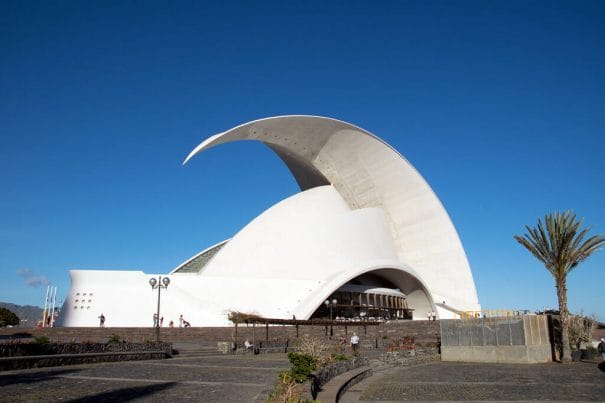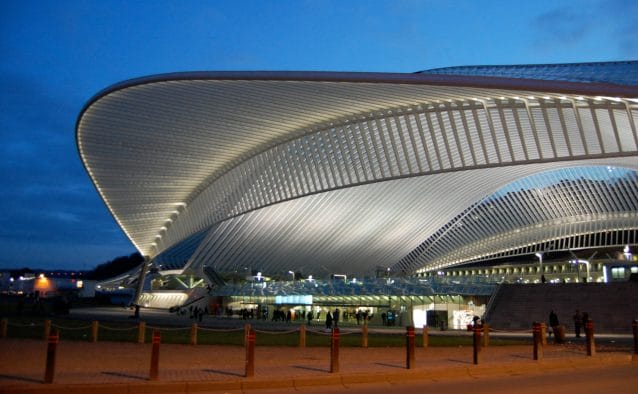Calatrava is globally recognized for his edgy architecture, use of materials, clean aesthetics, and Neo-Futurist style. His works seem like they come from a dreamlike land, with structures that defy gravity and architectural conventions. He is a truly inspiring figure for every architect who dares to push the edges. Here is a selection of five iconic buildings that represent his vision.
The ability of architect Calatrava to be both the designer and engineer is what gives his work a sculptural quality that sets it apart from all other modern architecture.
The Eye
The L’Hemisfèric represents ‘the all-seeing eye’ and ‘the wisdom it represents’. The museum is a place to experience the outer world, skies and stars.

The L’Hemisfèric is surrounded by a 24,000 square meter glass-bottomed pond. When the eye-shaped structure is opened and closed, the reflection can make it seem as though the eye is whole.
The L’Hemisfèric was the first building to open at the City of Arts and Sciences, an entertainment-based cultural and architectural complex that also includes El Museu de les Ciències Príncipe Felipe and L’Oceanogràfic.
Adán Martín Auditorium in Tenerife

Located in the Los Llanos waterfront of Santa Cruz, Tenerife, this auditorium connects the city with the ocean through a concrete structure resembling a giant crashing wave. The building is framed by 50-meter-tall arches and contains wood panels. The auditorium was designed according to acoustical requirements, and many of the walls are made from wood panels for artistic and dramatic effect.
Alamillo Bridge

This pedestrian bridge is a 250-meter-long structure that supports bikes and some motorized vehicles with cables while providing a balanced infrastructure between both sides. The bridge is filled with concrete, has three rows of light wells, and was designed by Calatrava in his signature style. The bridge is representative of Calatrava’s style, which has been well-received in public spaces for the population to enjoy.
Liège-Guillemins Railway Station

The Waterloo train station was developed by architect Santiago Calatrava to connect the two areas of the city that had previously been separated by railroad tracks. Symmetrically arranged with an arched roof over five platforms, it is a glass-and-steel vault that creates a sense of continuity between the station and its surroundings. The station’s design demonstrates how architecture can transform a place by melding with it instead of dominating or contradicting its character.
Reggio Emilia AV Mediopadana

This high-speed train station opened in 2013. The city’s master plan includes bridges, highway toll stations, and other features that make access to the city easier. The structure, which reaches 483 meters long, features a wave-like dynamic that is characteristic of other works by the architect. Its facade is made of laminated glass that covers the length of the platforms.The project has proven to be both attractive to tourists and a highly efficient landmark.
Museu do Amanhã

Calatrava’s Museum of Tomorrow in Rio de Janeiro is the largest urban development in Brazil and it has a visionary green approach to construction, with selective trash management, sustainable lighting and reforestation. The building is designed to respect its surroundings, which has been a key concern of many of Calatrava’s works: it floats on water.
It has become an important cultural venue, hosting temporary and permanent exhibitions that contribute to the city’s revitalization. Its structure includes an auditorium, a museum store, a restaurant, educational facilities, research space and a top floor that offers panoramic views of Guanabara bay.




















